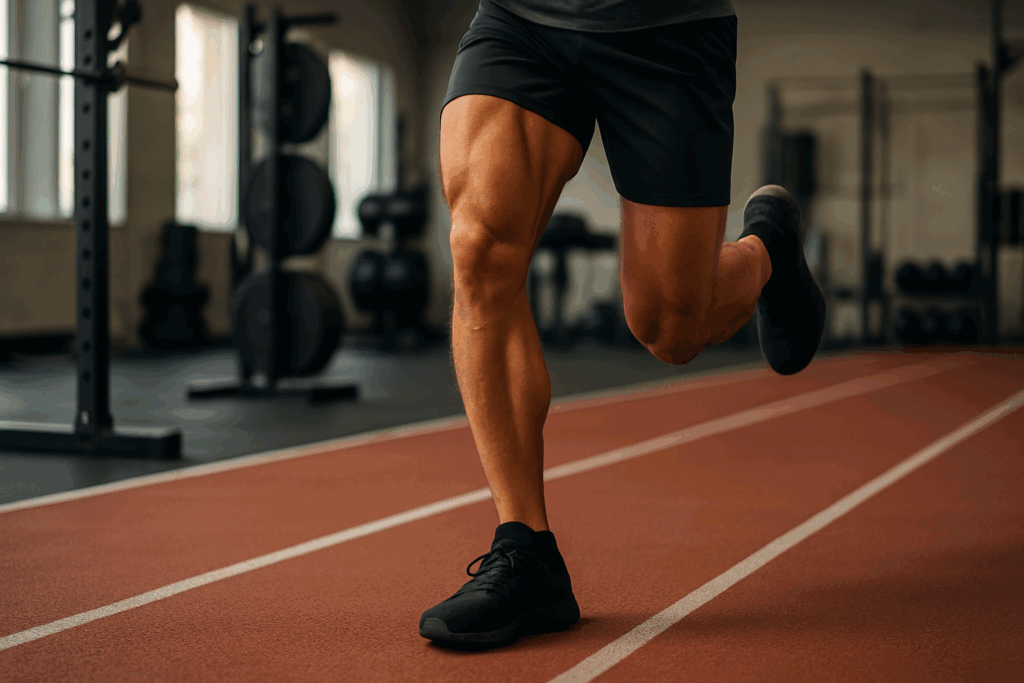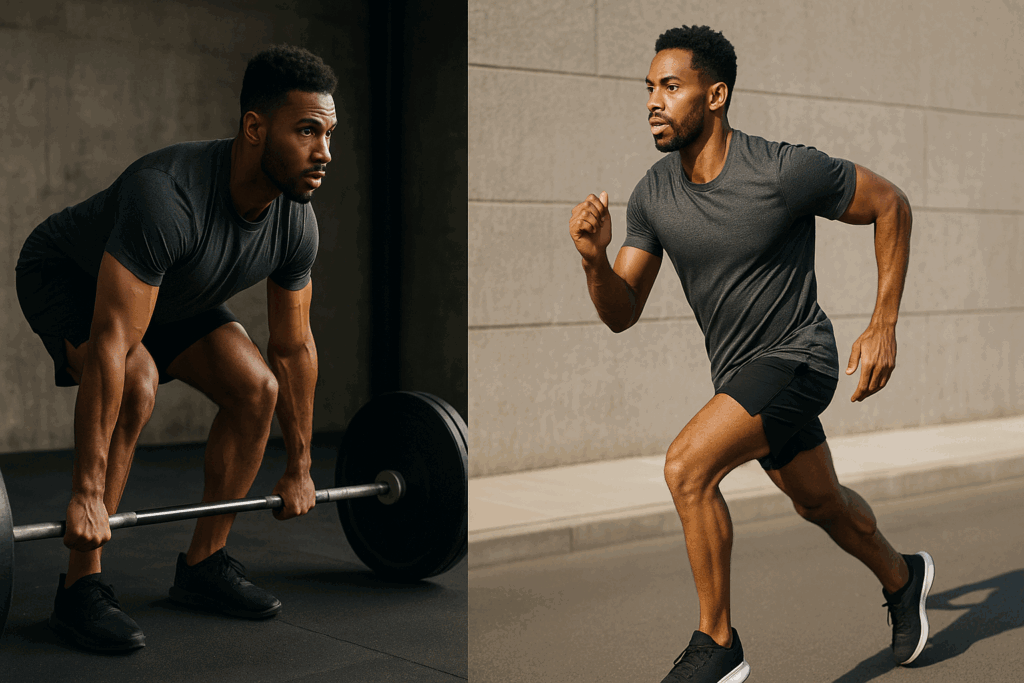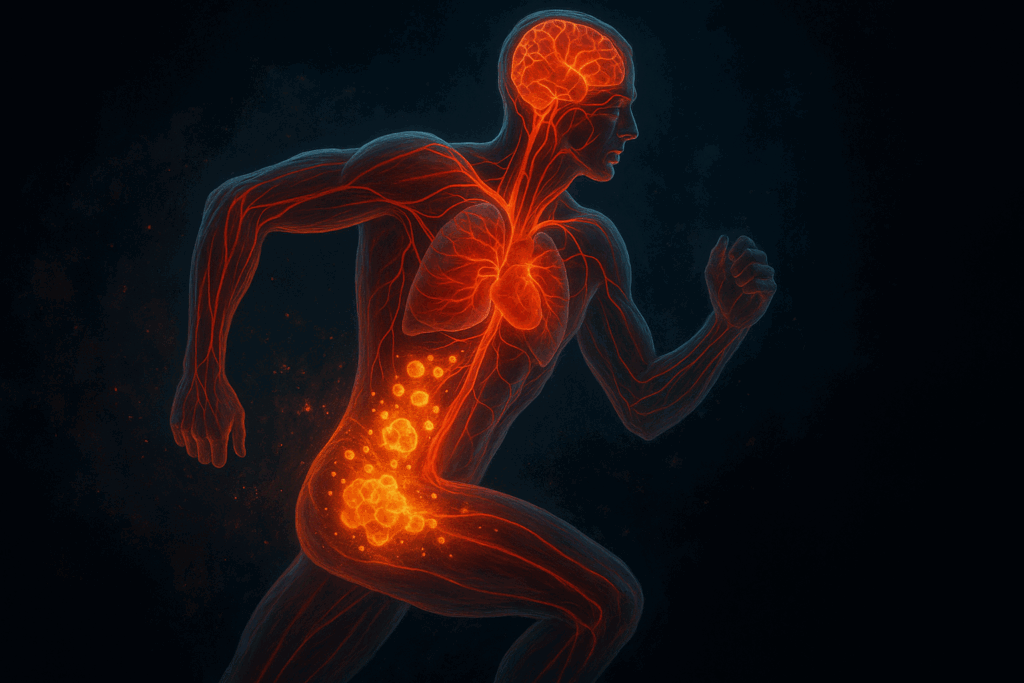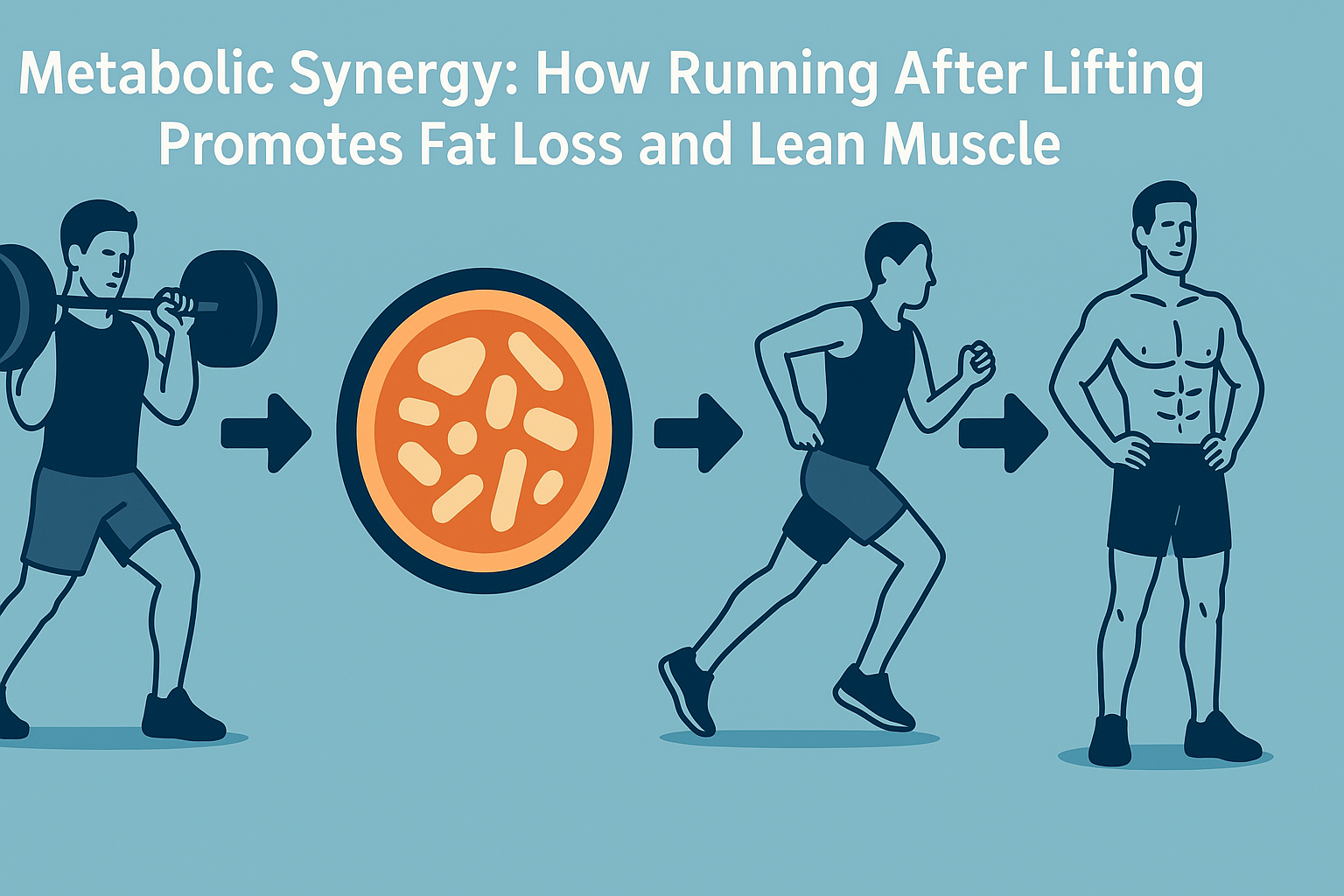Introduction: Why Running After Lifting Deserves a Place in Your Muscle-Building Strategy
In the dynamic world of fitness and strength development, the idea of combining cardio with resistance training has long sparked debate. Traditional approaches often cautioned against mixing the two, suggesting that aerobic exercise could undermine the anabolic effects of weightlifting. However, modern research and athlete experience are reshaping this narrative. In particular, the practice of running after lifting has emerged as a powerful tool to enhance recovery, stimulate growth, and build a more resilient physique. Rather than being antagonistic, running and lifting can be complementary when thoughtfully integrated. This article explores the essential muscle-building benefits of running after lifting for strength and recovery, providing evidence-based insights and practical strategies for maximizing results.
You may also like: The Ultimate Hypertrophy Workout Program for Building Strength and Size

Running After Lifting: Enhancing Muscle Repair and Anabolic Recovery
One of the most compelling reasons to implement running after lifting is its impact on post-workout recovery. Resistance training creates micro-damage in muscle fibers, which initiates the repair process that leads to hypertrophy. Running performed at a low to moderate intensity enhances circulation, delivering oxygen and essential nutrients to the muscles more efficiently. This improved blood flow accelerates the repair of damaged tissue and promotes faster recovery between training sessions.
Moreover, aerobic activity post-lifting helps flush out lactic acid and other metabolic byproducts that accumulate during resistance training. These substances, if left unaddressed, can lead to inflammation, fatigue, and prolonged soreness. Running helps cleanse the system, reducing delayed onset muscle soreness (DOMS) and making it easier to maintain a consistent training schedule. The rhythmic, non-impact nature of running at a steady pace supports recovery without placing additional stress on the body.
From a hormonal perspective, running after lifting can also support muscle-building. Light cardio stimulates the release of growth hormone and may moderate cortisol levels, especially if performed at the right intensity. Together, these effects create an internal environment that supports protein synthesis, lean muscle development, and better adaptation to training stimuli. Incorporating running after lifting is not about burning more calories—it’s about optimizing your body’s ability to recover, rebuild, and come back stronger.

Busting the Myth: Running and Strength Training Are Not Mutually Exclusive
The idea that cardio kills gains is a myth that refuses to die, despite mounting evidence to the contrary. For years, bodybuilders and strength athletes have feared that aerobic exercise would sabotage hypertrophy and strength development. While excessive endurance training may interfere with muscle growth when poorly timed, running after lifting—especially at moderate intensity—does not pose this threat. In fact, it may do the opposite.
Scientific studies reveal that when cardio is scheduled after resistance training, rather than before, it has a negligible impact on strength and size gains. A study published in the Journal of Strength and Conditioning Research demonstrated that post-lift aerobic activity enhanced satellite cell activation, which is essential for muscle regeneration. As long as the running session is brief and kept to a controlled intensity, it won’t blunt the anabolic signaling that occurs during strength training.
Additionally, combining running and strength training promotes a balanced fitness profile. Fast-twitch fibers recruited during lifting complement the endurance-based slow-twitch fibers activated during running. This dual engagement fosters complete muscular development, enabling athletes to perform better in both high-intensity and sustained efforts. Instead of viewing cardio as the enemy, lifters should reframe it as a recovery tool and performance enhancer that—when used wisely—supports long-term strength goals.

Metabolic Synergy: How Running After Lifting Promotes Fat Loss and Lean Muscle
One of the hidden benefits of running after lifting is its unique impact on body composition. After a heavy lifting session, glycogen stores in the muscles are depleted, forcing the body to rely more on fat as a fuel source during cardio. This means that running after lifting can be a highly efficient strategy for fat oxidation, allowing athletes to trim body fat without sacrificing lean mass.
The metabolic state post-lifting is primed for fat burning due to elevated hormone levels such as adrenaline and human growth hormone. When running is performed in this window, it amplifies the calorie burn and increases the percentage of energy derived from fat. Over time, this contributes to a leaner, more defined physique—a key goal for many athletes engaged in strength and hypertrophy training.

Furthermore, running post-lift improves insulin sensitivity, enhancing nutrient partitioning. This means that the carbohydrates and protein consumed after the workout are more likely to be stored in muscle tissue rather than converted to fat. Improved insulin sensitivity also supports muscle glycogen replenishment, preparing the body for the next intense lifting session. The synergy between lifting and running maximizes both performance and physique outcomes, turning the traditional “cutting vs bulking” dichotomy into a more fluid, sustainable process.

Muscle Soreness and Recovery: A Practical Approach with Running After Lifting
Recovery is not just about sleep and nutrition—it’s also about how you move between workouts. Incorporating running after lifting provides a dynamic recovery modality that keeps the body in motion without pushing it into overtraining. Gentle aerobic activity post-lift maintains joint mobility, supports connective tissue health, and minimizes the aches and stiffness that follow intense sessions.
The circulatory boost from running helps flush out inflammatory markers and supports lymphatic drainage. While resistance training temporarily compresses joints and tissues, running introduces a different biomechanical pattern that alleviates that tension. This variation encourages synovial fluid distribution in the joints, helping prevent stiffness and promoting longevity in high-volume lifters.
Additionally, engaging in post-lift cardio reinforces consistency. Many athletes struggle to return to the gym due to DOMS or fatigue. When running is integrated regularly after lifting, it serves as a buffer against debilitating soreness. This allows for more frequent training, reduced downtime, and more productive cycles of progressive overload—all of which are essential for muscle growth. When planned and executed correctly, running after lifting becomes a foundational recovery tactic rather than an energy-draining burden.

The Hormonal Landscape: How Running After Lifting Supports Anabolic Signaling
Hormonal balance plays a central role in muscle development and athletic performance. After lifting, the body experiences a surge in anabolic hormones such as testosterone and growth hormone. Running at the right intensity immediately afterward can support and even amplify these responses, creating an optimal hormonal environment for muscle repair and growth.
Cortisol, a catabolic hormone associated with stress and muscle breakdown, also spikes post-workout. While some cortisol is necessary for energy mobilization, prolonged elevation can undermine gains. A brief running session after lifting helps lower cortisol by activating the parasympathetic nervous system. This promotes relaxation, recovery, and hormonal homeostasis.
Moreover, consistent cardio sessions post-lifting improve the endocrine system’s responsiveness. Over time, this leads to more efficient hormone cycling, better sleep, and a more stable mood—factors that significantly impact training quality. For athletes who track hormonal health as part of their recovery and performance metrics, running after lifting serves as a reliable strategy to fine-tune their internal systems and improve the consistency of their anabolic output.
Cardiovascular Conditioning Without Sacrificing Strength
Lifters often overlook the importance of cardiovascular health, focusing instead on raw power and aesthetics. However, the ability to recover between sets, sustain longer sessions, and support general well-being hinges on aerobic capacity. Running after lifting enhances heart and lung function without interfering with strength development when properly dosed.
A strong cardiovascular system helps transport nutrients and oxygen more efficiently, reducing the time needed to recover between sets or sessions. Improved circulation also accelerates the removal of carbon dioxide and waste products that build up during heavy lifting. This increased efficiency translates into more productive workouts and reduced fatigue across longer training blocks.
Importantly, running after lifting doesn’t require long, grueling distances. Just 15–20 minutes of steady-state or zone 2 cardio is enough to reap the cardiovascular benefits without undermining muscle-building efforts. This brief session enhances endurance, maintains conditioning, and supports heart health—all while preserving your gains. The result is a more well-rounded, robust athlete who’s not just strong, but also fit and durable.

Mental Resilience and Discipline: The Psychological Edge of Post-Lift Running
Beyond the physical benefits, running after lifting cultivates a mental edge that separates good athletes from great ones. Completing a cardio session after an already taxing strength workout requires mental toughness and discipline. Over time, this repeated act of perseverance builds resilience—an essential quality for long-term success in fitness and life.
Running also provides a transition point—a mental and emotional cooldown from the intensity of lifting. It offers time to reflect, process, and reset. The steady rhythm of running has meditative qualities that promote mindfulness, reduce anxiety, and sharpen focus. These psychological benefits carry over into other aspects of life, improving stress management, sleep quality, and emotional regulation.
For those navigating busy schedules, running after lifting is also an efficient use of time. It consolidates two key training elements into one session without requiring additional travel or planning. This practicality supports routine adherence and reinforces the mindset that physical training is non-negotiable. Ultimately, it’s not just your muscles that grow stronger with this approach—it’s your mindset and resolve.
Frequently Asked Questions: Advanced Insights on Running After Lifting
1. How does running after lifting impact long-term muscular adaptation and tendon resilience?
Running after lifting may influence long-term muscle and tendon health in ways that go beyond short-term performance. While lifting promotes muscular hypertrophy and tendon stiffness, adding aerobic activity like running can increase capillary density and collagen synthesis in connective tissues. Over time, this dual adaptation can improve resilience to tendon overuse injuries and support muscle recovery. Recent studies also suggest that concurrent training may reduce the risk of sarcopenia (age-related muscle loss) by improving both cardiovascular and neuromuscular health simultaneously. By integrating running after lifting in a controlled manner, individuals may extend the longevity and functional capacity of their musculoskeletal system well into later life.
2. Can running and strength training combined affect hormone profiles differently than training alone?
Yes, combining running and strength training can uniquely influence hormone responses, especially when performed in the same session. Strength training increases testosterone and growth hormone levels, supporting muscle growth. Running—particularly longer-duration or high-intensity formats—can elevate cortisol levels, which in excess may blunt anabolic signaling. However, research indicates that when structured correctly, the acute rise in cortisol post-running after lifting is temporary and does not hinder long-term muscle development. Moreover, the overall hormonal response may enhance fat metabolism, stress tolerance, and energy regulation more effectively than either modality alone.
3. Is there a psychological benefit to performing running after lifting as part of a fitness routine?
Absolutely. Running after lifting can offer significant psychological benefits that extend beyond physical conditioning. Many lifters report a sense of mental clarity and stress relief when finishing with aerobic work, thanks to the endorphin release triggered by steady-state or interval running. This “cool-down” effect also provides a sense of accomplishment and closure to the workout. Additionally, including running after lifting may reinforce positive behavior patterns and promote exercise adherence through routine and structure. For individuals struggling with post-lifting restlessness or sleep disruption, the cardiovascular component can help regulate circadian rhythms and improve evening sleep quality.
4. How should nutritional timing change when incorporating running and strength training in one session?
When planning to combine running and strength training in one session, nutritional timing becomes more critical to optimize both performance and recovery. Consuming a carbohydrate-protein blend before your workout helps maintain glycogen levels during lifting and running. If running follows lifting, a quick intra-session carbohydrate source (such as a sports drink or banana) may help sustain energy and reduce muscle breakdown. Post-workout, emphasize fast-digesting protein and carbohydrates to replenish depleted glycogen stores and initiate muscle repair. The caloric demands of running after lifting are higher, so strategic meal planning helps maintain lean mass while fueling endurance adaptations.
5. Why might recovery protocols differ after running following resistance training compared to running alone?
Recovery from running after lifting is more complex due to the combined muscular and metabolic fatigue incurred. Lifting causes microtrauma and depletes glycogen, while running—especially at moderate to high intensity—further taxes cardiovascular and metabolic systems. This dual stress demands a more robust recovery strategy, including longer rest periods, active recovery days, and prioritization of sleep and hydration. Compression therapy and contrast baths may also be more effective after such hybrid sessions. Unlike running alone, where the focus is largely on joint recovery and energy repletion, post-running after lifting recovery must address both muscular repair and systemic fatigue.
6. What role does running after lifting play in injury prevention for athletes?
Running after lifting can serve as a powerful tool in injury prevention when used with intention and moderation. The combination of strength training and running enhances proprioception, coordination, and muscular balance, which are critical for injury resilience. By increasing blood flow post-lifting, running aids in flushing out metabolic waste and reducing inflammation. This recovery-enhancing effect can prevent delayed onset muscle soreness (DOMS) and reduce compensatory movement patterns that often lead to injury. For athletes in multidirectional or endurance sports, running after lifting also helps simulate real-game fatigue scenarios, allowing for better motor control under stress.
7. Can running and strength training be tailored to support specific athletic goals such as power, endurance, or agility?
Yes, combining running and strength training can be customized to match diverse athletic goals with precision. For power athletes, shorter sprints or resisted running after lifting can enhance fast-twitch fiber activation and explosive performance. Endurance athletes may benefit from tempo runs post-strength sessions to develop muscular endurance and aerobic efficiency under fatigue. Agility-focused individuals, such as those in field or court sports, might use multidirectional running drills paired with plyometrics and dynamic strength training. The synergy between modalities allows athletes to simulate sport-specific demands while building well-rounded performance profiles.
8. How does running after lifting affect metabolic rate and fat oxidation?
Performing running after lifting has been shown to significantly elevate excess post-exercise oxygen consumption (EPOC), leading to a prolonged increase in metabolic rate. This post-session calorie burn, also known as the “afterburn effect,” is amplified when resistance training is followed by aerobic activity. Additionally, because glycogen is already partially depleted from lifting, the body shifts to oxidizing more fat during the running segment. This strategic sequencing makes running after lifting an effective protocol for individuals seeking to maximize fat loss while preserving lean muscle mass. The cumulative metabolic benefit can be substantial over weeks of consistent application.
9. Are there specific populations for whom running after lifting may be contraindicated?
While running after lifting offers many benefits, certain populations should approach this strategy with caution. Older adults with joint degeneration or those with cardiovascular limitations may find the added stress too taxing without proper progression. Individuals recovering from injuries or those with compromised neuromuscular control may also risk re-injury due to fatigue-induced instability. Beginners should prioritize movement proficiency and recovery capacity before introducing combined modalities. For these groups, walking, cycling, or swimming might be safer and equally beneficial alternatives for integrating aerobic activity post-resistance training.
10. What future trends or innovations are emerging in the science of running and strength training?
The integration of running and strength training is evolving with advances in wearables, biometrics, and AI-driven coaching platforms. Emerging research is examining the optimal sequencing of modalities based on individual chronotypes, hormonal cycles, and genetic profiles. Wearable tech can now monitor real-time lactate thresholds and recovery readiness, helping users decide whether to perform running after lifting or vice versa. Additionally, adaptive periodization strategies—driven by machine learning—allow for personalized training prescriptions that adjust intensity and volume dynamically. As science continues to unravel the molecular interplay between aerobic and anaerobic training, expect increasingly customized approaches that enhance both performance and health longevity.
Conclusion: Unlocking Maximum Gains with Running After Lifting
Running after lifting is no longer just a tool for endurance athletes or those trying to “burn fat.” It has evolved into a critical component of comprehensive training strategies designed to enhance muscle growth, accelerate recovery, and promote long-term resilience. Far from being detrimental, this cardio modality—when performed intelligently—complements resistance training in ways that are both scientifically supported and experientially validated.
By improving circulation, moderating hormonal responses, reducing soreness, and supporting metabolic efficiency, running after lifting empowers athletes to train more consistently and recover more rapidly. The synergy between running and strength training redefines traditional boundaries, offering a path toward a stronger, leaner, and more enduring physique.
As with any training intervention, the key lies in personalization and moderation. Short, low to moderate-intensity running sessions are ideal for reaping benefits without tipping into overtraining territory. When integrated into a well-structured program, this strategy not only supports muscle growth but also builds a heart that’s as strong as the body it powers.
For athletes, bodybuilders, and fitness enthusiasts at the college graduate level and beyond, embracing running after lifting is a forward-thinking, performance-enhancing move. It’s a powerful reminder that progress often lies not in choosing one method over another, but in understanding how to use them together—for strength, for health, and for life.
Further Reading:
3 Reasons Why You Should Perform Cardio After Lifting





